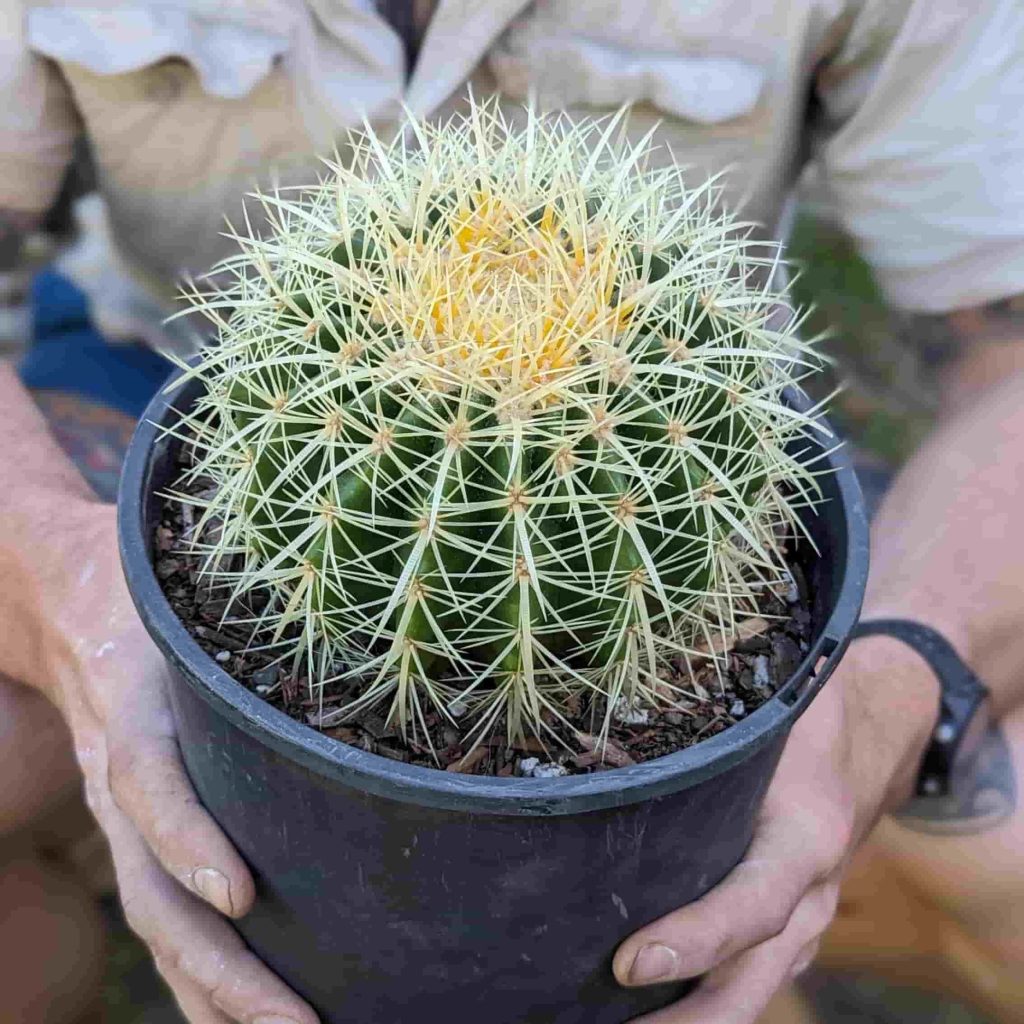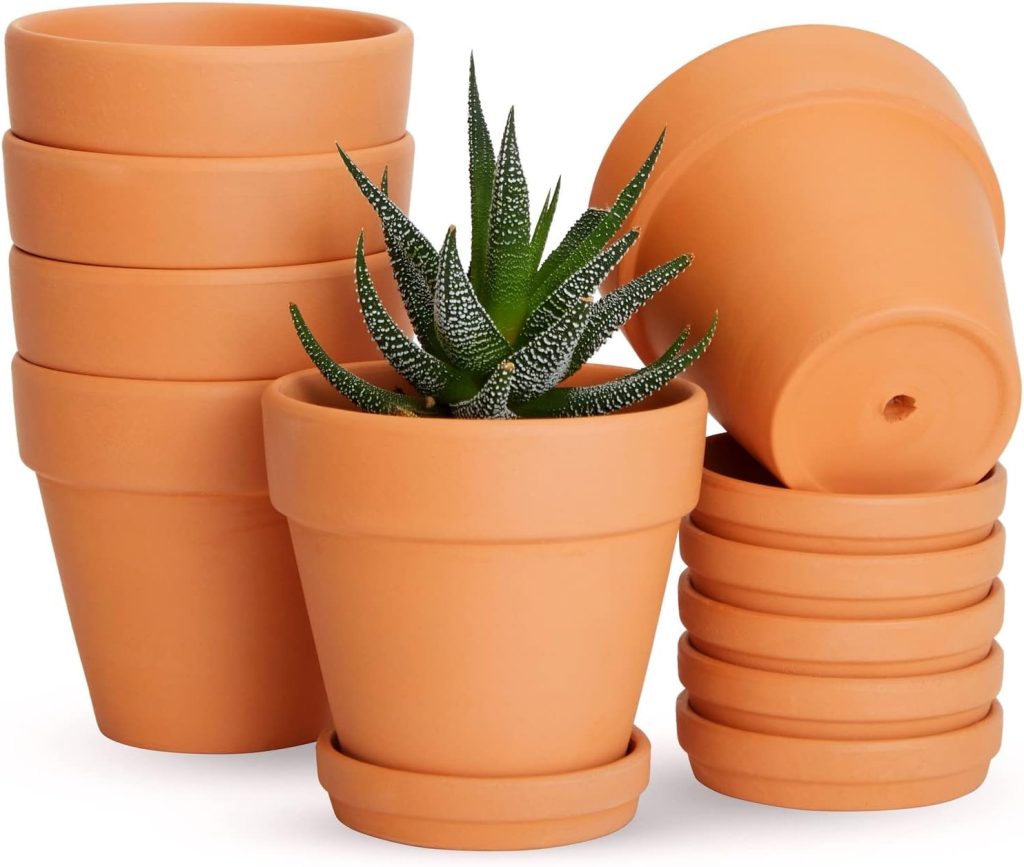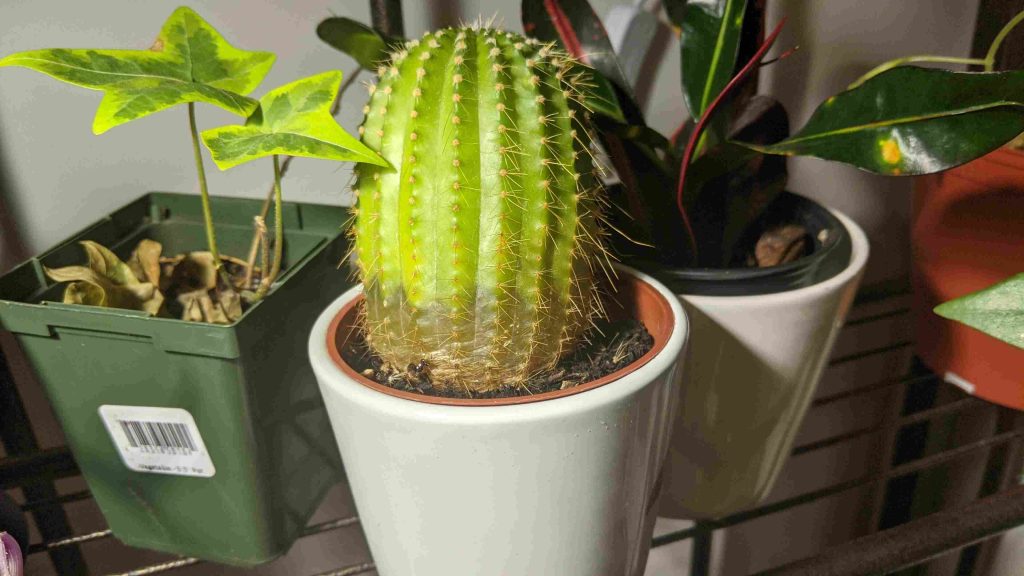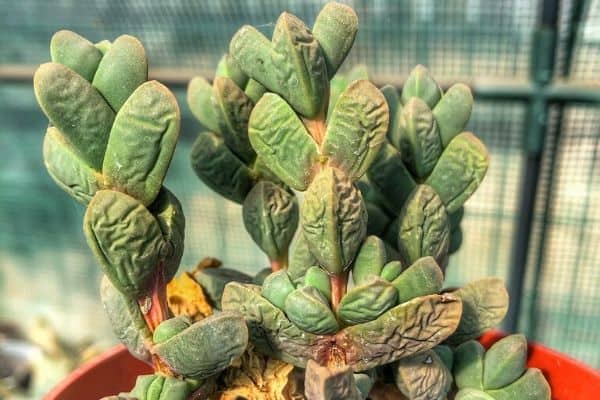If you think cacti don’t need water at all, you’re not alone! Many plant lovers assume these spiky beauties can survive on neglect, but the truth is—watering a cactus the right way is key to keeping it healthy and thriving.
Cacti are tough survivors, built to handle extreme drought in their natural habitats. But in your home, whether sitting on a sunny windowsill or decorating your office desk, their watering needs are different. Too much water? Root rot. Too little? Shriveled, stressed cactus.
So, how often should you water a cactus? Well, it depends! Factors like the type of cactus, season, pot type, and even humidity levels all play a role. In this guide, I’ll break down exactly how to figure out the best watering routine for your cactus—so you can stop guessing and start growing with confidence.
Let’s dive in! 🚀
Understanding Cactus Water Needs
Cacti are famous for surviving in the harshest deserts, where rain is rare, and the sun is relentless. But does that mean they don’t need water? Not at all! Even the toughest cacti require the right amount of water to stay healthy. The key is knowing how much and when to water them.
Unlike regular houseplants, cacti store water in their thick, fleshy stems and tissues. This built-in reservoir allows them to go for weeks—or even months—without a drink in the wild. However, when grown indoors or in a controlled environment, their water needs change. They rely on you to provide just enough moisture to keep them hydrated without overdoing it.
The biggest mistake new cactus owners make? Overwatering. Because cacti store water, they don’t need frequent watering like other houseplants. In fact, giving them too much water can drown their roots and cause rot—a silent killer that’s often irreversible. On the other hand, too little water can cause them to shrink, wrinkle, or even stop growing altogether.
So, how do you find the perfect balance? By understanding the factors that affect a cactus’s watering needs. In the next section, we’ll break it all down so you can confidently care for your cactus like a pro!
Factors That Affect How Often to Water a Cactus
There’s no one-size-fits-all watering schedule for cacti. Why? Because several factors determine how quickly your cactus uses up its stored water. To keep your cactus healthy, you need to understand these factors and adjust your watering routine accordingly. Let’s break them down:

A. Type of Cactus
Not all cacti are the same! Some thrive in bone-dry deserts, while others come from humid forests.
- Desert Cacti (e.g., Barrel Cactus, Saguaro) → Need less frequent watering. They’re adapted to long dry spells.
- Forest Cacti (e.g., Christmas Cactus, Orchid Cactus) → Need more frequent watering, as they naturally grow in tropical or subtropical regions.
Windy Sprouts’ Tip: Always research your specific cactus type to know its ideal watering needs.
B. Season & Growth Cycle
Cacti don’t grow at the same pace all year round. Their watering needs shift with the seasons:
- Spring & Summer (Active Growth Phase): This is when your cactus is actively growing, meaning it needs more water (about every 7-14 days, depending on other factors).
- Fall & Winter (Dormant Phase): During colder months, cacti enter dormancy, requiring minimal water (every 3-6 weeks or even less). Overwatering during this time can lead to rot.
Windy Sprouts’ Tip: In winter, only water your cactus when the soil is completely dry—and even then, do it sparingly!
C. Indoor vs. Outdoor Growth
Where your cactus lives also affects how often it needs water:
- Indoor Cacti: Rely entirely on you for water, but since indoor conditions are usually stable, they may need water less often than outdoor cacti.
- Outdoor Cacti: Are exposed to rain, wind, and temperature fluctuations. If your cactus is outdoors and gets occasional rain, you may not need to water it at all.
Windy Sprouts’ Tip: If your cactus is outdoors in a rainy season, avoid watering completely—let nature do the work!
D. Potting Mix & Drainage
Your cactus’s soil plays a huge role in how often it needs water. A well-draining mix is essential to prevent root rot.
- The ideal cactus mix contains sand, perlite, and pumice to improve drainage.
- Standard potting soil holds too much moisture, increasing the risk of overwatering.
Windy Sprouts’ Tip: If water sits on top of the soil for too long after watering, your mix might be too dense—consider repotting with a better-draining medium.
E. Pot Type & Size
The kind of pot you use directly impacts watering frequency:
- Terracotta or clay pots absorb moisture and help the soil dry faster.
- Plastic or ceramic pots hold moisture longer, meaning less frequent watering.
- Larger pots hold more soil, which retains water longer than smaller pots.

Windy Sprouts’ Tip: If you struggle with overwatering, switch to a terracotta pot—it naturally helps prevent excess moisture.
F. Humidity & Temperature
Your home environment matters!
- In hot, dry weather, cacti lose moisture quickly and need more frequent watering.
- In cool, humid conditions, they hold onto moisture longer and need less water.
Windy Sprouts’ Tip: If you live in a humid area, always check soil moisture before watering—your cactus might not need as much as you think!
How Often Should You Water a Cactus?
Now that you understand the key factors affecting a cactus’s watering needs, let’s get to the real question: How often should you water your cactus?
The short answer? It depends. But don’t worry—I’ll break it down into a simple, practical watering schedule based on different conditions.
A. General Watering Guidelines
Here’s a quick reference guide for how often to water your cactus based on its environment:
| Growing Condition | Watering Frequency |
| Indoor (Spring/Summer) | Every 10–14 days |
| Indoor (Fall/Winter) | Every 3–6 weeks |
| Outdoor (Hot/Dry Climate) | Every 7–10 days |
| Outdoor (Cool/Humid Climate) | Every 3–4 weeks |
| Forest Cactus (e.g., Christmas Cactus) | Every 7–10 days year-round |
Windy Sprouts’ Tip: Instead of sticking to a strict schedule, always check the soil before watering. More on that in the next section!
B. The Best Way to Water a Cactus
Knowing when to water is only half the battle—you also need to know how to water correctly to avoid problems like root rot. Follow these steps for the best results:
- Check the Soil First
- Stick your finger one to two inches deep into the soil. If it feels dry, it’s time to water.
- If the soil is even slightly damp, wait a few more days before checking again.
- For an even more precise method, use a moisture meter to test soil dryness.
- Use the Soak-and-Dry Method
- Pour water slowly around the base of the cactus until it starts draining from the bottom.
- Never let water sit in the saucer—empty it out immediately to prevent root rot.
- Avoid light misting or shallow watering—cacti need a deep soak to thrive.
- Water in the Morning (If Possible)
- Watering in the morning allows the plant to absorb moisture before temperatures rise, reducing evaporation loss.
- If watering in the evening, make sure the excess water drains completely to avoid fungal issues.
- Use the Right Water
- Tap water is okay but may contain minerals that build up over time. If possible, use filtered water or rainwater for healthier plants.
Windy Sprouts’ Tip: If you see your cactus wrinkling or looking shriveled, it may be underwatered. If it’s soft, discolored, or has a mushy base, it’s likely overwatered. Adjust your watering routine accordingly!
Signs of Overwatering and Underwatering
Even with the best intentions, it’s easy to overwater or underwater a cactus. But here’s the good news: your cactus will show you signs before things get worse! Learning to recognize these early warning signs can save your plant from irreversible damage.
A. Signs of Overwatering (The #1 Cactus Killer!)
Overwatering is the most common mistake even experienced plant owners make. Unlike tropical plants, cacti store water in their stems, meaning too much moisture can quickly lead to root rot—the silent killer of many cacti.
How to tell if you’ve overwatered your cactus:
- Soft, mushy, or translucent stems → This means the cells inside are bursting from too much water.
- Yellowing or blackened areas → A clear sign of rot setting in.
- A foul smell coming from the soil → Root rot is already happening below the surface.
- Unexpected wrinkles while the soil is still damp → This might look like dehydration, but it’s actually the opposite—cells are collapsing due to excess water.

Windy Sprouts’ Tip: If you suspect overwatering, stop watering immediately and let the soil dry completely. If the damage is severe, take the cactus out of its pot, trim any black or mushy roots, and let it dry for a day before repotting in fresh, dry soil.
B. Signs of Underwatering (Not as Common, But Still Harmful)
Cacti are drought-resistant, but they still need water to survive. If left dry for too long, they will start showing signs of dehydration.
How to tell if your cactus is underwatered:
- Wrinkled or shriveled skin → A classic sign that the plant is using up its stored water reserves.
- Dry, brittle stems → If it feels hard and crispy instead of firm and plump, it’s extremely dehydrated.
- Slowed or stunted growth → If your cactus isn’t growing during the active season, it may not be getting enough moisture.
- Pale or dull coloration → A healthy cactus has a rich, vibrant color. If it looks faded or dusty, it needs water.

Windy Sprouts’ Tip: If your cactus is underwatered, don’t flood it all at once. Start with a gentle watering and gradually increase the amount over a few days to avoid shocking the plant.
By now, you know how often to water, how to water correctly, and how to recognize the warning signs of too much or too little water. But how do you make sure your cactus stays consistently healthy? In the next section, I’ll share some pro tips for long-term cactus care so your plant thrives all year round!
FAQs: Common Reader Concerns
Can I water my cactus with tap water?
Yes, you can use tap water to water your cactus, but there’s a catch. Tap water often contains minerals like calcium, magnesium, and chlorine, which can build up over time and harm your cactus. This is especially true if you live in an area with hard water, which has a higher mineral content.
Windy Sprouts’ Tip: If you notice white crusty spots on the top of the soil or around the pot, it’s a sign of mineral buildup. To avoid this, try using filtered water or rainwater for your cactus. Not only will it keep your plant healthier, but it also helps maintain the soil’s pH balance, preventing those unwanted mineral deposits.
Should I mist my cactus?
No, mist is not necessary for cacti, and in most cases, it’s better to avoid it altogether. Cacti are desert plants and thrive in dry conditions with low humidity. Mist can leave excess moisture on the cactus’s surface, encouraging the growth of mold and rot.
What happens if I never water my cactus?
Cacti are tough, but they do need water to survive! If you never water your cactus, it will slowly use up its water reserves, causing it to become dehydrated. Over time, the plant’s stems will shrivel up, and you might notice the color fading to a dull or yellowish hue. If dehydration goes on too long, the cactus may eventually die from lack of hydration.
Conclusion
Taking care of a cactus is all about finding that perfect balance between not enough water and too much. Here’s a quick summary of what we’ve covered:
- Watering Frequency: Cacti need less frequent watering than most plants, but the exact schedule depends on the environment. Generally, you should water every 10–14 days during the growing season and 3–6 weeks in the dormant winter months.
- Check the Soil: Always check the soil before watering to make sure it’s dry about an inch or two deep.
- Signs of Over and Underwatering: Watch out for yellowing, soft stems (overwatering) or shriveled, brittle plants (underwatering).
- General Care: Use filtered or rainwater for the best results, and avoid misting your cactus—just give it a good soak when needed.
Remember, each cactus is unique, so while guidelines are helpful, observing your plant’s individual needs is the best way to keep it thriving. No two cacti are the same, and your plant will give you the signs it needs to stay healthy.
Have a watering tip that works for you? Share it in the comments below—we’d love to hear what’s working for your cactus!

